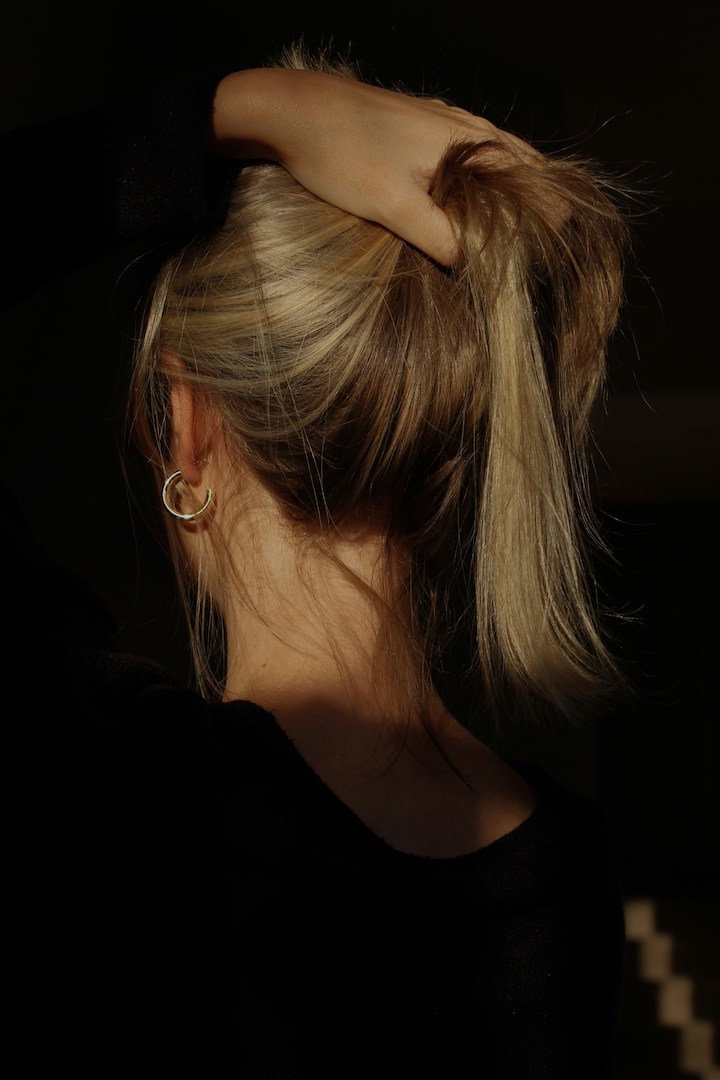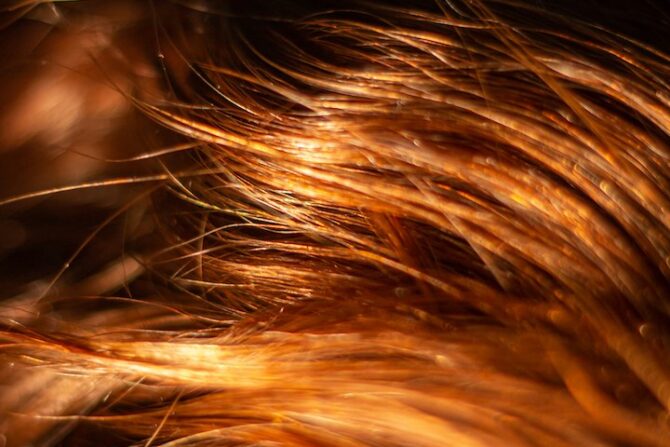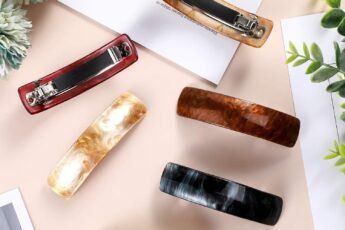You ever run your fingers through your hair and feel that dry, almost straw-like texture? That’s usually your hair’s way of telling you that the cuticle—the outer layer—is wide open and stressed out.
Now, you’ve probably tried oils, conditioners, even masks that promised miracles. But if your hair still feels rough or keeps breaking, then you’re likely missing the one thing that truly matters: sealing the cuticle.
Let’s not overcomplicate this. When your cuticle is sealed, your hair holds onto moisture, stays smooth, and actually listens when you try to style it. When it’s not, no product can really help—not for long, anyway. And here’s the good news: new innovations are making this so much easier than it used to be. You don’t have to guess your way through it anymore.
Let me walk you through some hair cuticle sealing innovations.
Table of Contents
What Really Happens When Your Hair Cuticle Isn’t Sealed
So, what does an “open cuticle” even mean?
Imagine each hair strand like a piece of rope. The cuticle is the outer layer, kind of like shingles on a roof. When it lies flat, everything underneath is protected. But when it sticks up? Water gets in, heat causes damage, and products just sit there, doing absolutely nothing.
That’s when you start noticing things like:
- Frizz that won’t quit
- Dullness, even after conditioning
- Hair snapping off, especially at the ends
- Tangles that seem to multiply overnight
And the worst part? Most products don’t fix the cuticle. They just sit on top, making things look better for a day or two. But as soon as you wash your hair again, it’s back to the same struggle.

What It Means to “Seal” the Hair Cuticle
Let me put it simply—when you seal your cuticle, you’re laying those shingles flat again.
Your hair feels smoother. It reflects light better. It’s easier to detangle. But more than that, you’re locking in moisture. That’s the big win. Because moisture is what makes hair flexible and less likely to break.
And here’s something I didn’t realize for a long time: sealing your cuticle changes how your hair behaves. It holds styles longer. It resists humidity. It stays clean-feeling for more than a day. That’s not just luck. That’s sealed cuticle magic.
Also Read: 7 Hair Gloss Longevity Factors That Secretly Steal Your Shine
The Problem With Traditional Sealing Methods
Now, if you’ve been using heavy oils or silicone serums, you’re not alone. That’s what everyone used to recommend. I used to do it too. But here’s the catch: those things don’t seal your cuticle—they just coat it.
So your hair looks smooth. Maybe even shiny. But the damage underneath is still there.
Silicones, for example, can build up fast. And over time, they make it harder for moisture to get in. Oils? They can help, but only in the short term. They don’t always penetrate, and they wash out easily.
That’s why sealing needs to be more than surface-level. It has to support the cuticle from the inside. That’s where these newer innovations come in.
Breakthrough Hair Cuticle Sealing Innovations
Let’s talk about what’s working now. These aren’t gimmicks. They’re science-backed changes to how we treat the outer layer of our hair. And when you understand them, you’ll be able to pick what’s right for you—without wasting money on things that only half-work.
Bonding Technology (Peptides and amino acids)
This one is probably my favorite.
Bonding technology sounds super technical, but here’s what it actually means. These are ingredients that act like glue for the broken spots in your hair. And they’re not just patching it on the outside—they’re mimicking what your hair is made of inside.
So instead of slapping a band-aid over damage, these little proteins get in there and rebuild. You might not notice it overnight, but after a few washes? You’ll feel it. Less snapping. More elasticity. That soft, stretchy bounce when you pull a strand and it doesn’t break.
If your hair is color-treated, bleached, or heat-damaged, bonding is something you want on your radar.
pH-Balanced Rinses
This one is sneaky but powerful.
Your hair cuticle naturally closes when the environment is slightly acidic. But most shampoos are too alkaline. That means every time you wash your hair, your cuticle opens up—and stays that way unless something tells it to shut.
That’s where pH-balanced rinses come in.
Some people use apple cider vinegar rinses (diluted, of course). Others go for salon-grade acidifying sprays. The science is simple: a slightly acidic rinse helps the cuticle lie flat. That means less frizz, more shine, and better retention of any treatments you use.
It’s like a reset button for your hair’s surface.
Heat-Activated Sealers
I used to think heat was the enemy. And it can be, if you’re using it on dry, unprotected hair. But some of these new heat-activated sealers? They actually use heat to help your hair.
Here’s how it works. Heat opens your cuticle—temporarily. These products are designed to jump in at that moment and seal it shut while it’s still warm. So when you finish styling, your hair is smoother and protected.
It’s kind of brilliant.
Especially if you blow dry, flat iron, or even use a hot brush—this tech works with your routine, not against it.
Nano Lipid Carriers (NLCs)
This one sounds intense, but stay with me.
Nano lipid carriers are teeny-tiny particles that carry oils, moisture, and nutrients into the hair shaft. Not on top—into. They’re designed to be small enough to actually penetrate the cuticle before it’s sealed shut.
This means two things:
1. Your hair holds onto hydration better.
2. The benefits last longer than surface-level oils.
If you’ve ever wondered why your hair gets dry again so fast after you oil it, this might be why. The molecules were just too big to get in. NLCs fix that.
Protein Micro-Encapsulation
This one’s like a slow-release vitamin—except for your hair.
These proteins are wrapped in tiny bubbles that release gradually. So instead of dumping all the repair ingredients at once, they go to work over time. That gives your hair a chance to absorb and actually use what it’s being fed.
It’s especially useful if you’re someone who colors their hair often or deals with split ends. This tech doesn’t just sit on the surface—it trains your hair to behave better over time.

What You Can Start Doing Today
You don’t need a complete overhaul. If you’re feeling overwhelmed, here’s where you can start—today, no shopping required.
- End your hair wash with cool water. It helps flatten the cuticle.
- Switch to a microfiber towel to prevent frizz and breakage.
- Use the cold shot button on your blow dryer. It seals the cuticle after styling.
- Cut back on how often you shampoo if your scalp allows it.
- Avoid heavy oils and silicones that build up without real benefits.
If you’re curious about products, look for ones that say things like “bond repair,” “pH-balanced,” or “heat-activated.” These usually point to the innovations we just talked about.
Check Out: Best Hair Masks for Wavy Hair
How to Tell If It’s Working
You don’t need a microscope to know your cuticle’s sealed. Your hair tells you, if you’re paying attention.
Here’s what to look for:
- It feels smooth when it’s wet. That’s a big sign.
- It tangles less, even without tons of conditioner.
- It starts to shine in natural light again.
- Your curls (if you have them) clump better and frizz less.
- You notice you’re not reaching for a brush every ten minutes.
It’s not about having perfect hair. It’s about having hair that feels good to you—and doesn’t fight you every step of the way.
Conclusion
When your cuticle is sealed, everything changes.
Your products work better. Your styling lasts longer. Your hair actually feels like your hair again. And these new innovations? They’re not here to replace your entire routine. They’re here to make it actually work.
The cuticle is where it all starts. If you’ve been struggling, it’s not because your hair is bad—it’s because it’s been left unprotected.
Start small. Pick one thing to tweak. Trust what your hair tells you. Because once you know what to look for, your hair really does say everything.
Frequently Asked Questions
Can sealing the hair cuticle really fix damaged hair?
It can’t undo all damage, but it can protect what’s left and help your hair recover. A sealed cuticle holds onto moisture and treatment better, which leads to stronger hair over time.
How often should I use cuticle sealing products?
That depends on your hair type. If you’re using bonding treatments or pH rinses, once or twice a week is a good place to start. If you’re using a heat-activated product, use it every time you style with heat.
Is heat bad or helpful when sealing the cuticle?
Heat can be helpful if you’re using a product that works with it. Without protection, heat can damage your cuticle. But with the right product, it actually helps seal it.
What ingredients should I look for on labels?
Look for things like:
- Hydrolyzed proteins (keratin, silk, rice)
- Amino acids
- Acids (like lactic acid or citric acid)
- Peptides
- Heat-reactive polymers



